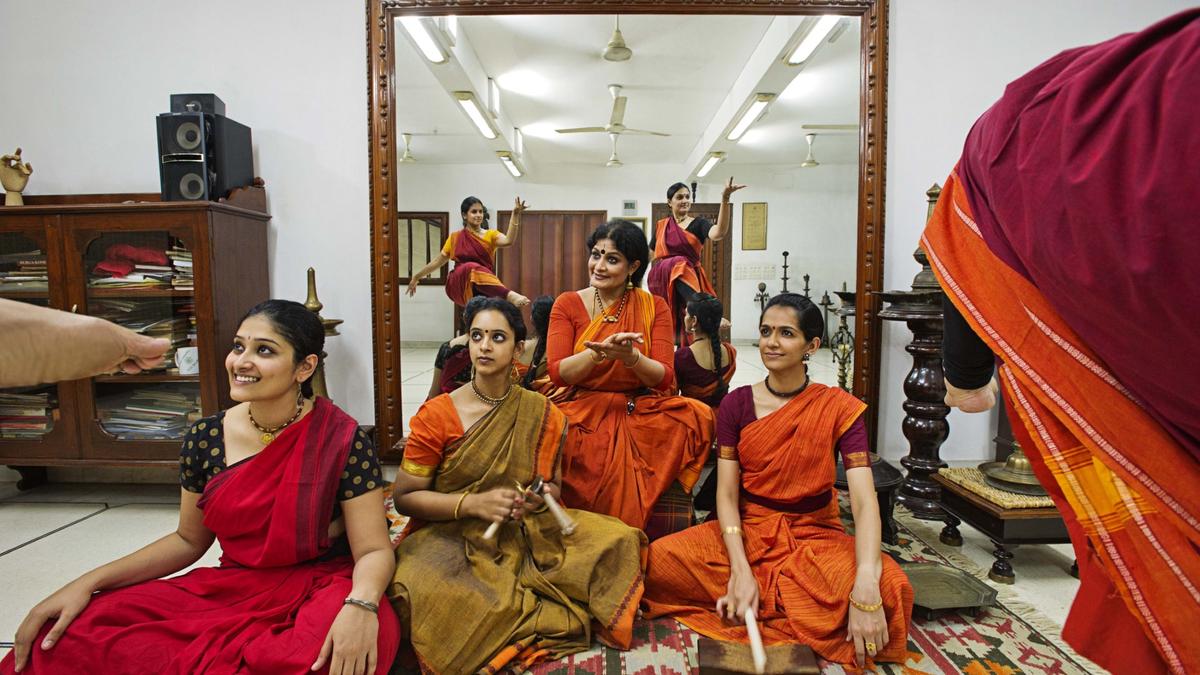
‘Teachers need to think beyond dance classrooms,’ says Geeta Chandran
The Hindu
Geeta Chandran to receive the Nritya Choodamani title from Sri Krishna Gana Sabha
“I am glad I was born when I was born,” says the Delhi-based dancer Geeta Chandran. The import of the statement hits me as we speak of her long career spanning more than five decades (50 years since her arangetram) and several milestones. Geeta speaks of her first teacher Swarna Saraswathi (a cousin of Balasaraswathi) under whose care she came at the age of five. For a dozen years, Geeta trained under her watchful eyes, absorbing every little nuance. Her training began with an understanding of the Thanjavur Quartet (brothers Chinnayya, Ponnayya, Sivanandam and Vadivelu). She then moved on to alarippus, padams, javalis, varnams (‘Mohamaana’ was the first varnam she learnt) and thillanas. Geeta’s guru believed “not in performance, but in process” and that is how her journey began with assimilation, absorption and understanding.
Swarna Saraswathi was a fabulous singer, and Geeta understood that dance and music were truly the two sides of the same coin, and one could dance better only with a thorough knowledge of music — she would go on to learn music for 25-odd years, under various gurus. The tutelage was thus based on music and Swarna sang in class even as she taught dance.
A certain reverence spills through Geeta’s voice as she speaks about Swarna, all she prepared her for, and her fortune of being able to be among her last batches of students.
Geeta’s arangetram took place when she was 12 years old.
“Sometimes, when dancers say they know music, it is mostly kelvignanam (learning by listening), but that is not equal to the rigour of practice. Geeta says it was only in hindsight that she realised many facets of her guru’s teachings.
Swarna Saraswathi never taught complete pieces, which was the norm in ‘institutionalised teaching’. Every class saw new thoughts, new ideas emerging, and it was here that Geeta understood the concept of manodharma. The process was like osmosis, rather than giving students a finished piece in hand. This was also why various aspects of Swarna’s teaching such as singing and nattuvangam stayed with Geeta. She recalls how her teacher would draw a circle and ask her to do the thatti-mettu within it, stating that a certain energy came from there and that the araimandi would be perfect only within the circle.
When her guru fell ill, Geeta was unable to see anyone else in her place, but she needed guidance and so briefly trained under Guru Sadasivam (Vazhuvoor style). This was where she first got an understanding of Pushpanjali. Soon, on critic Subbudu’s advice, she went to another guru Dakshinamoorthy (Dandayudhapani Pillai’s brother). It was here that she understood performative dance, jathis and stagecraft. Geeta had to attune herself to the new style. Soon, Jamuna Krishna welcomed her into the world of abhinaya through padams and javalis. And, when Kalanidhi mami came to Delhi to conduct workshops on abhinaya, Jamuna nudged the young Geeta to attend it. She later learnt under her in Chennai too. Jamuna, meanwhile, opened her world to Hindi poetry, especially those by Surdas and Kabir. This led to Geeta’s own research on Haveli Sangeet in Brindavan. She won a senior scholarship for this, and tuned many compositions to make them suitable for dance. It was here that Geeta saw her dance as seva.

Delhi’s official weather station at Safdarjung recorded 104.8 mm of rainfall in the 24 hours ending at 5.30 p.m. on Saturday, pushing the cumulative rainfall this rainy season to 38% above normal. From June 1, the start of monsoon in Delhi, the city has received 509.22 mm of rainfall. As per India Meteorological Department (IMD) data, the Capital saw rainfall in excess of 45% in June and 24% in July. Rain was recorded in Delhi on all days of July, except 20 and 21.

 Run 3 Space | Play Space Running Game
Run 3 Space | Play Space Running Game Traffic Jam 3D | Online Racing Game
Traffic Jam 3D | Online Racing Game Duck Hunt | Play Old Classic Game
Duck Hunt | Play Old Classic Game










